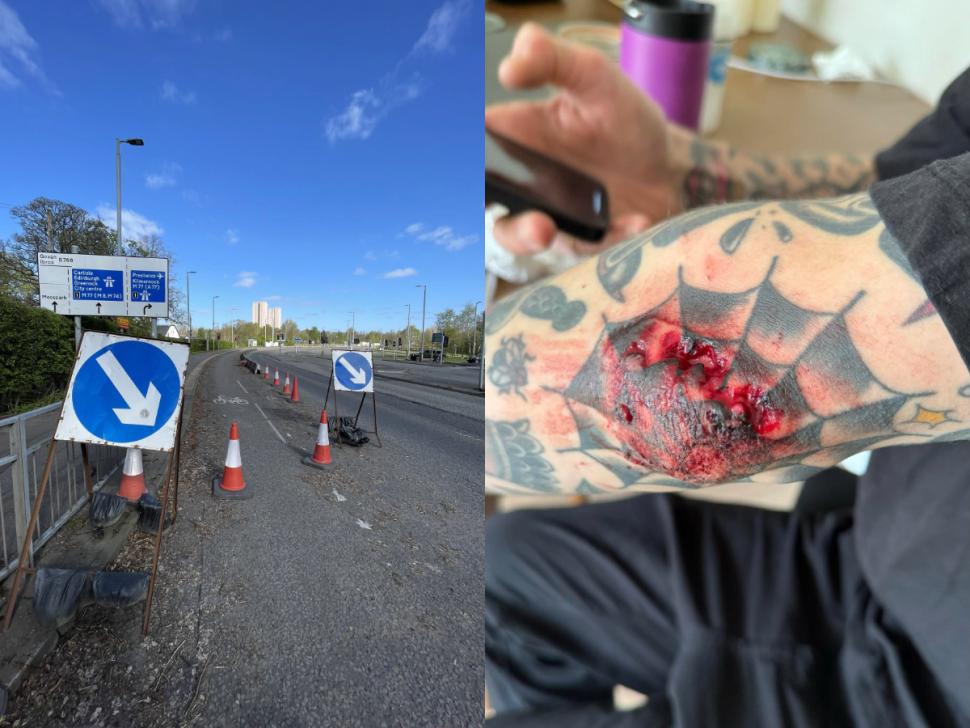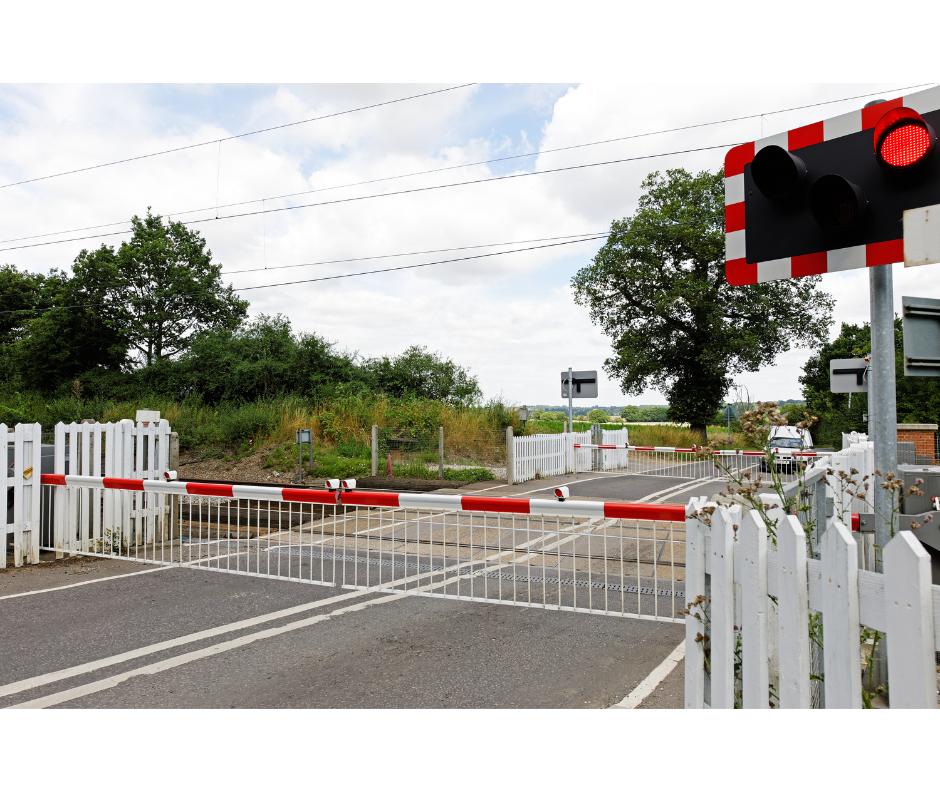A cyclist has secured a settlement from Network Rail over a level crossing crash caused by a dangerous gap between matting at the railway crossing.
The incident happened in April at a level crossing in Carnoustie, Cycle Law Scotland explaining how its lawyers were contacted after a cyclist called Stella suffered crash injuries during a training ride.
While riding across the level crossing in Carnoustie, the front wheel of her bike became trapped between the rubber flangeway mats surrounding the railway track, the bike “coming to a quick halt and she was catapulted over the handlebars, striking her knees off the bars and causing injury to her face and her shoulder”.
Questioning why she had crashed, Stella took photos of the gap where her wheel had become trapped and contacted the law firm to express concern that other riders could suffer similar crashes if the issue was not rectified as the gap was clearly wide enough for a road bike tyre to get stuck.
A Freedom of Information request to Network Rail suggested that the rail operator was aware of problems with gaps appearing between the mats and was also aware this may cause danger to cyclists. However, the records suggested Network Rail had not done anything to fix the issue and Cycle Law Scotland intimated a claim for negligence.
Network Rail’s insurers denied the case on the basis there had been a ‘cyclists dismount’ sign prior to the crossing, however Stella said she had not seen the small blue sign as she was concentrating on vehicle traffic behind her and was being careful to cross the tracks at a 90 degree angle.
Cycle Law Scotland also questioned the relevance of the sign as evidence, raising the case at the All Scotland Personal Injury Court (ASPIC) in Edinburgh and pointing out such ‘cyclists dismount’ signs are only advisory.
“There was no alternative suitable route for Stella to take other than to dismount from her bike and carry it over her shoulder up the stairs and across the overpass over the railway crossing,” her lawyers argued, offering supportive evidence from a Highways Expert in court.
Again, liability was initially denied by Network Rail, but they ultimately accepted the gap in matting had caused a hazard. Solicitors for the rail company repeated the argument that failing to dismount meant Stella was partly to blame, however following lengthy arguments — during which Cycle Law Scotland highlighted Network Rail’s inaction on a known problem — a settlement offer was made.
After “intensive negotiations” an increase in the offer and the settlement eventually accepted by Stella was more than twice the original offer.
The latest settlement comes just a week after Cycle Law Scotland confirmed it had secured compensation for another Scottish cyclist, that after they were injured in a crash caused by rope tied across a Glasgow cycle lane during roadworks.
 Council settles with cyclist injured in cycle lane crash (credit: Cycle Law Scotland)
Council settles with cyclist injured in cycle lane crash (credit: Cycle Law Scotland)
The case involved accomplished gravel racer Patrick Hughes — the winner of the 19-34 age group category at last year’s British Gravel Championships — who was injured last year.
Despite his lawyers being pleased with the “fair” settlement, they said the case’s “unanswered questions and lack of responsibility from those in charge” remained “deeply troubling”.

